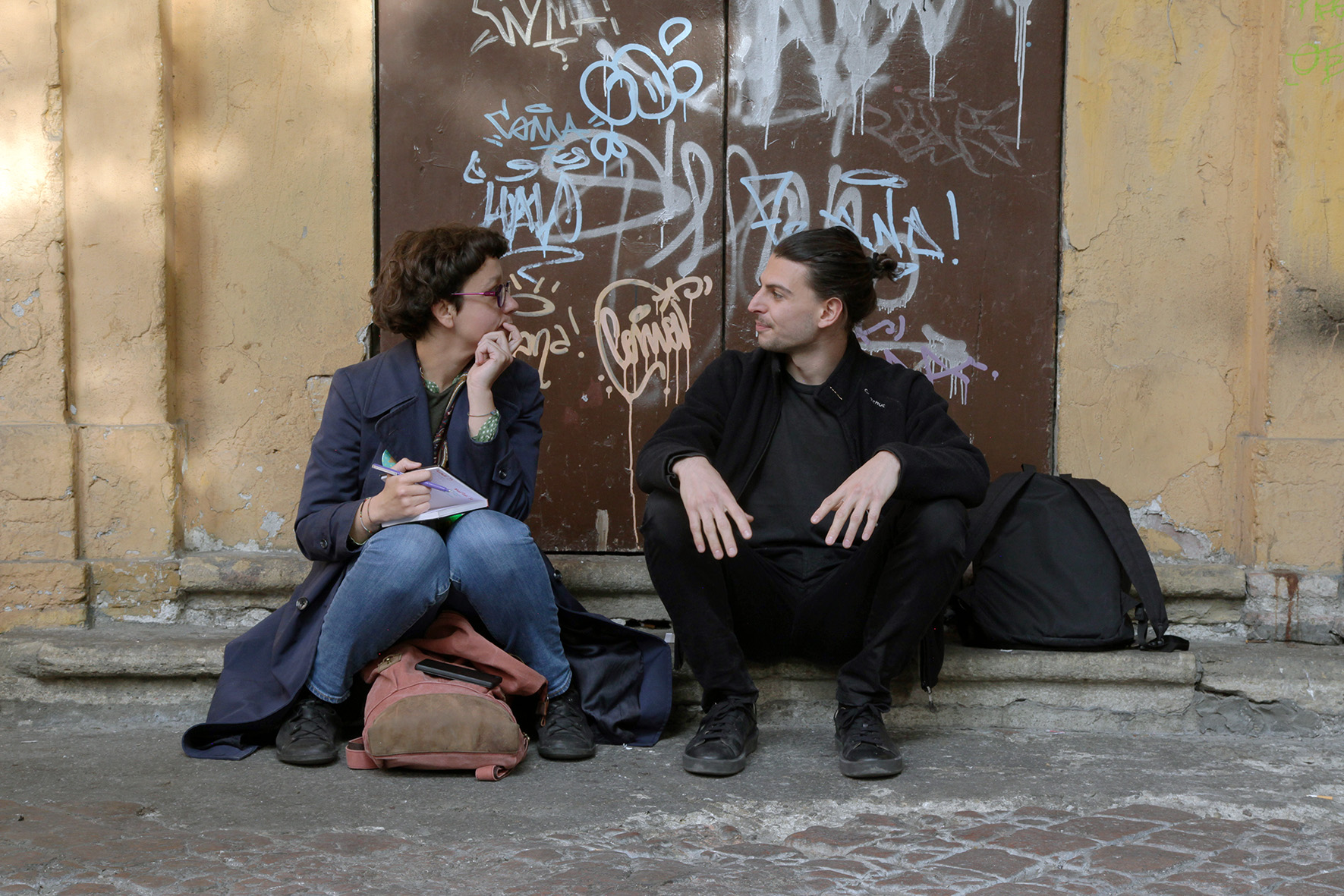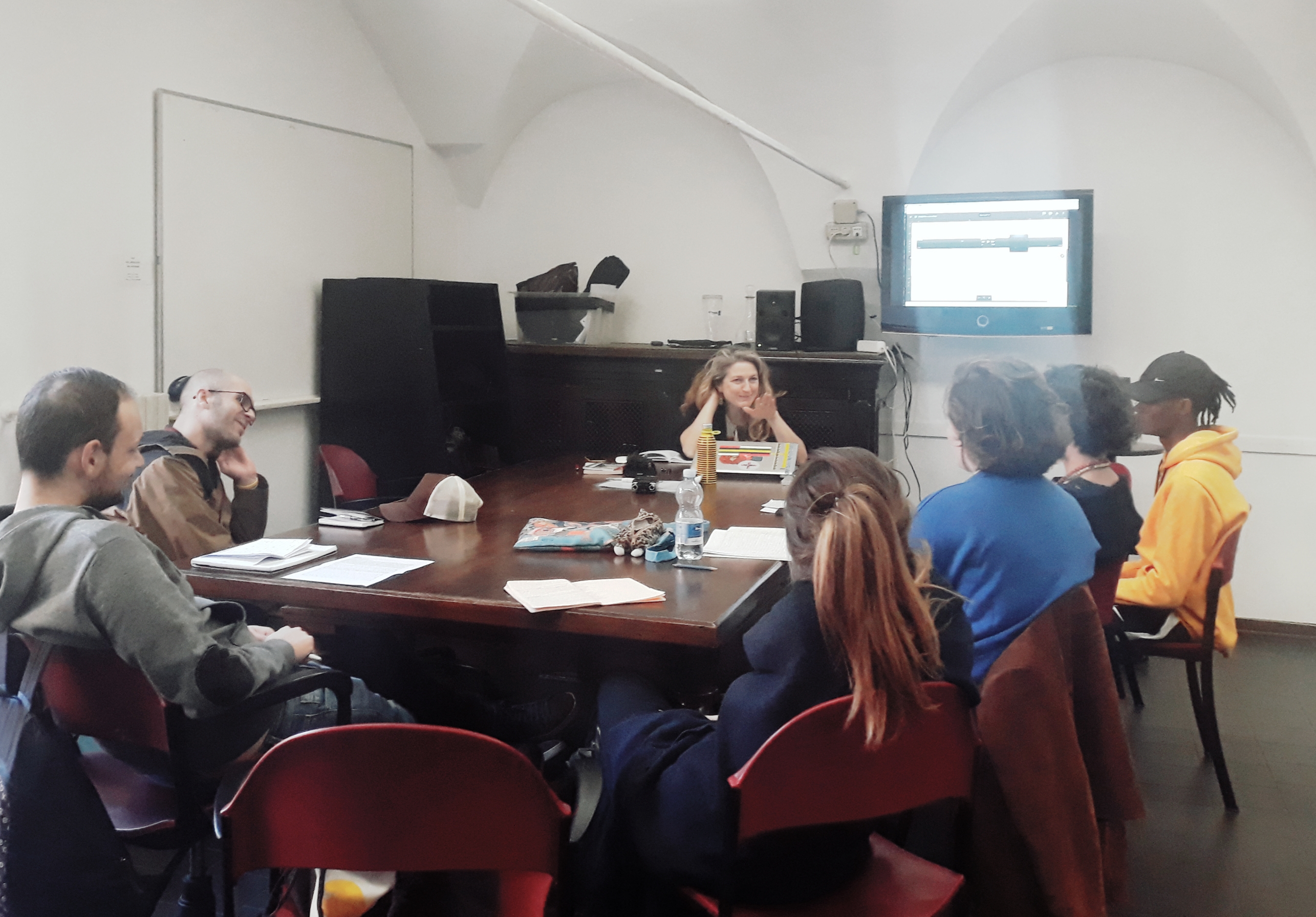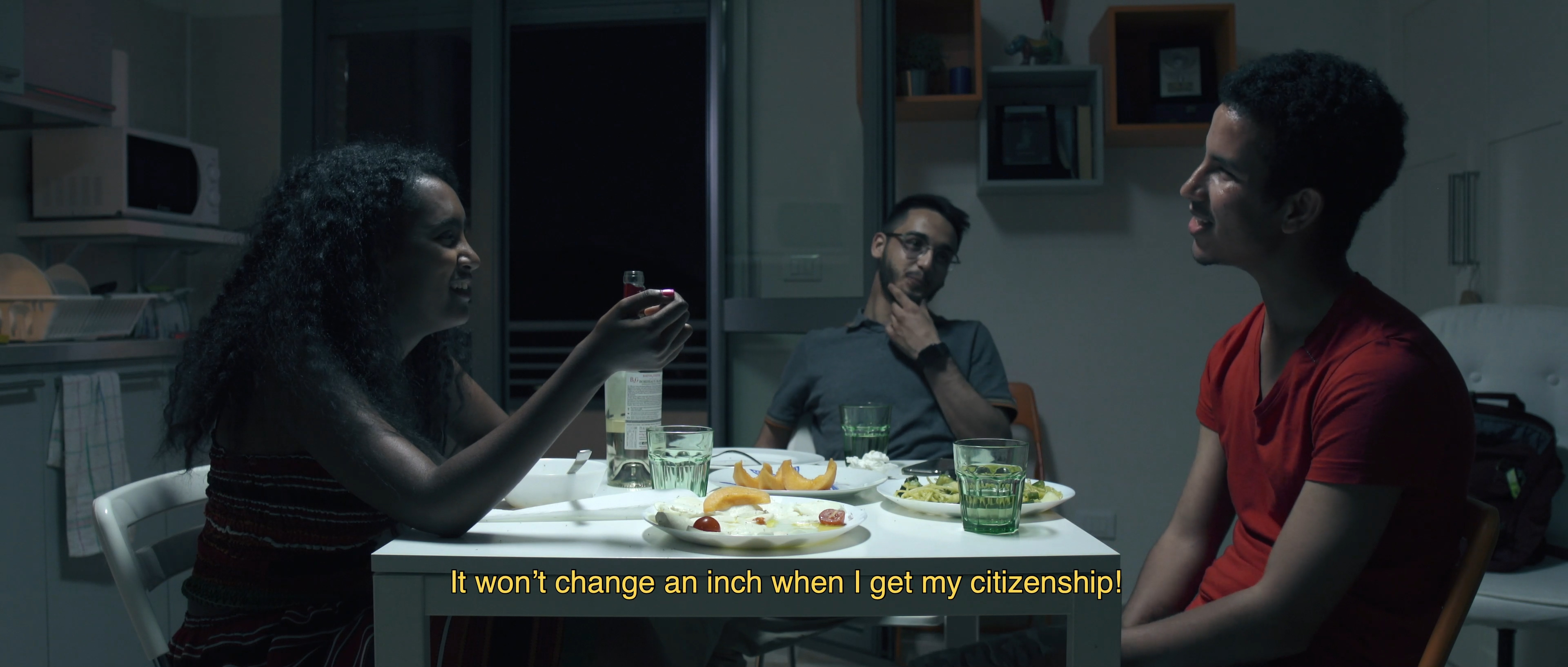Since Autumn 2017, the Bologna-based collective ZimmerFrei has been conducting a series of workshops ('External Memory', 'Atlante') with youngsters aged between 14 and 20 years old with different cultural backgrounds using practices such as sound exploration, location scouting, audio and video recording, transforming places into narratives. The creative process will lead to the production of 'Saga' a documentary film series. The first two episodes were presented in Warsaw in October 2019 at the Atlas of Transitions festival in Warsaw. In wait of the release of the final version of "Saga", here's a new interview realised to collective member Anna De Manincor, who talks about the last phases of the project, from workshop number three 'Storytelling' to filmmaking.

Q: The principal theme of the third workshop was storytelling. Have you noticed any transformation in the participants?
A: [audible noises while she speaks in the background]... when you film a documentary it’s always like this, airplanes flying, trucks backing out, people with suitcases passing by… [laughs].
Yes, I can say there was a transformation in the relationship between the participants, and also between them and us (the directors). It concerns most of all their expectations. Some of them were expecting to participate in a documentary workshop from the director’s point of view, while some others were expecting to learn some basics of script writing. The most important aspect for us is to find a way to produce a narrative which instead of arising from a direct question, comes from an object of attention and observation. Where do stories come from and how can they be passed on from one person to another? During the last two meetings, the participants helped us understand that what they needed was more space, even empty space in which they could freely create without being influenced by us. The last exercise we did was to face conversations during which each participant asked the other to say something about him or herself, to be later used as the basis for a story. Not an interview, but a sort of inquiry or research to help you find the right direction you are interested in taking. Whether you like fiction or tragicomedy, or you like telling about a fact in particular, and you would like to visualise it in your story, then you will channel your question to obtain what you need.

Q: You moved across the city. Where have you been? What criteria did you use to select the locations? What was the relationship between the participants and the city?
A: One of the places where we went was Via Mascarella because it is a street where many stories concentrate in one place. Among the stories, there is one about the smells of this place. It appears that this street has recognisable smells! We even imagined a route made of smells only, including the hours in which they occur. For instance, at the beginning of Via Mascarella, on Mondays only, there is a mixed scent of fish, beer, urine, detergent. Then, it smells like glass powder, brick powder, pizza, sweat, leather, wine. And dog. We created stations in those places, for both video and audio recording. However, they aren’t stories, just perceptive places. In Mascarella Street, Belle Arti Street, the area of Largo Respighi and Verdi Square, we did a sort of observation exercise for a long time. We asked them to stay in one place and to do an “attempt of exhausting”, following the list of everything which captured their attention, naming everything that happens. Just in the form of a pure list, without developing or commenting. This practice is inspired by George Perec’s book. The participants wrote down their lists, and registered audio files, which were later on combined with the video takes of the places mentioned in the lists. They are like sorts of beginnings of potential stories or situations of which you are able to see boundaries, even if they are not explicitly told. It happens that the filmed minutes casually go in line with a story of a moment which just passed. That's the point from which the spectator can start imagining all the rest. Documentaries are impossible films, in which the past can't be filmed, and nothing can happen for a second time, therefore the present is like the container of both past and future, without being able to see it. Like a divinatory practice, one may say.
Q: Did the workshop and the production of 'Saga' make you discover something new about the sense of belonging to a place?
A: The workshop participants were very young, between 16 and 22 years old, so they represent the spectrum of what interested us. Some of them were born in Bologna, some came to Bologna to do something, and others just happened to come here. Some have been here all their lives or some since a very short time. These differences have created relationships between the participants, even simply by going to a place together, no matter if it is a place you already knew or if you have to find the way to reach it. The preliminary work of 'Saga' is more connected to adopting a place which you call home. When you have different backgrounds, affiliations or familiarities linked with a place, what is it that you say about the place you come from, or about the place where you live, which is your home? The most proactive participants are the ones who have been in Bologna since little, because they have more curiosity and because they saw in this "unusual" workshop activity an opportunity to acquire a greater resistance to stay in these places, even without having nothing to do. It's strange to bring up the things that happen around you, which you don't usually describe, because they are random or meaningless. In reality, they are part of modern history. They are the present.
Q: What are the next steps for 'Saga'?
The first episode of 'Saga' is dedicated to walking. It is the first thing we do to explore a place. In each film we did - both ourselves (the directors) and the people involved who guide us - do long walks. In particular Yakub - the central character in the first episode - did nothing but walking during his first months in Bologna. It had been only four months since he arrived from Nigeria after crossing Libya and he said: "Since I didn't have nothing to do, it seemed to me that it was better to move all the time instead of staying still in the same place. That's why I know all the city now". Tea is the other figure who comes forth in the first episode. She's the person we've been focusing on now and she represents the theme of "leaving". Her path is the opposite, because she was born in Bologna (that's where her high school is), and next year, she will go to school in Turkey and live with a Turkish family. We are following this passage: her last moments in Bologna, and the awaiting for another year in another city, where we will imagine her life that continues in parallel. A part of her life will go on with her friends who stay in Bologna, while another part will be in Istanbul. We ask ourselves how would these two present moments intertwine, and how she will perceive her city after she comes back as a "foreigner". In the meantime, we are also focusing on Filmon, an Eritrean young boy who lives in Bologna since he was 11, and thanks to him we met another Eritrean girl, who has been living here since she was a little girl and remembers no place else than Bologna. Their paths are special because they are both visually impaired, and they know every inch of the city's streets they usually walk through. They open us up to a new type of perception compared to the one we normally have. It challenges what we value most in films, the shapes of places, the way people look, the relationship through the glance. In their case, their surroundings have a much more tridimensional aspect than what you can see in the film.

During the last workshop, the conversation Bana had with Danielle - a Brazilian girl who lived in Bergamo and Bologna, started a new topic: bearing something that you don't give account for, but that everyone is asking you about. It happens often that they would ask you where you come from, whereas the most important for you is where you actually live. The country your family comes from is like a surname, which is sticking to you, like a yellow highlighter that everybody asks about, but in the meantime you life is here! This is a subject we haven't talked about so far. Some ways of thinking about events and stories linked to Bologna's places have surfaced from the participants. We talked about the Pratello district, the university zone, the Bolognina area, some parks, the bridge above the train station. I think these places will be important for the next episodes. At the end they will all merge into one unique film which intertwines them following parallel times.
Q: Do you think documentary film and its various techniques can be an efficient tool to deal with themes linked to migration issues?
What interests me the most about documentary film is the mediation with what we call reality, which involves both the creator and the spectator. A documentary is a film. It is realised in the same way as a film, except that it isn't written before being filmed. However, both the producer of the documentary and the person who watches it have constantly an active mind, continuously asking themselves about what they are seeing. They continue wondering which position they should take regarding what they feel or what they see. You're not diving into a sort of novel. The observer represents his own world. That's what I find interesting. A mean to set distances which makes us reflect upon the place we live in. I once had a beautiful conversation with the filmmaker Roberto Minervini, whose documentary just went out. The one he made in the US in the New Orleans area about the identity of black Americans, taking into account the difficulty to enter into a relationship with this reality, starting from another group considered as "minority" (an Italian who became American). Talking about a place, which isn't the one you come from is a normal thing for any documentary filmmaker, but it often happens that we find people or institutions who would like to stop you, given that they consider everyone should take care of their own business.
In Minervini's film, there is great harmony with the people. The camera shots are very close. Only the subject is in-focus, all the rest is blurred. In order to guarantee this closeness, it requires a particular technique and light conditions. I liked the film very much even though it is the exact opposite of what we usually do, namely multiplying by two or three the distance we would normally have while talking to someone, to melt the state of tension caused by having the camera so close, when you are not an actor of a professional. I was impressed by the fact that we have the same intentions but two completely different techniques. His concept is isolating people from their contexts, to give them a dignity of individuals, a kind of volume, and a presence which invades our observation space. Whereas, the way we do it, is to embrace people in their surrounding spaces by using wide angles, in order to recognise the places and build a sort of proximity while maintaining width and the possibility to move around. There are no genres of documentary films. You can find different ways of observing or creating connections with things. Each documentary film is a prototype. The same director or troupe can adopt completely different techniques for their next film, or even invent something for the purpose depending on the ongoing situation.
Interview by Konstancja Dunin-Wasowicz
photos by ZimmerFrei



